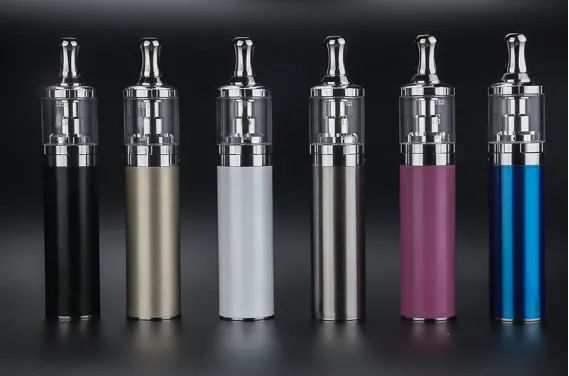The 8 Common Plastics Used in E-Cigarette Components: A Comprehensive Guide for the Vape Industry
The vaping industry has grown exponentially over the past decade, with e-cigarettes becoming a popular alternative to traditional smoking. As the demand for high-quality vaping devices increases, manufacturers are paying closer attention to the materials used in their construction. Among these materials, plastics play a crucial role in ensuring the durability, safety, and aesthetic appeal of e-cigarettes. In this article, we will explore the eight most common types of plastics used in e-cigarette components, their properties, and their applications in the vaping industry.
Introduction to E-Cigarette Components
An e-cigarette, also known as a vape or vaporizer, is an electronic device that simulates the experience of smoking by heating a liquid (commonly referred to as e-liquid or vape juice) to produce vapor. The primary components of an e-cigarette include the battery, atomizer, and e-liquid reservoir. These components are often housed in plastic casings or made from plastic materials to ensure lightweight, durable, and safe designs.
Plastic components in e-cigarettes include the outer shell, mouthpiece, e-liquid tank, and internal parts. The choice of plastic material is critical, as it must meet specific requirements such as chemical stability, heat resistance, non-toxicity, and mechanical strength. Below, we delve into the eight most commonly used plastics in e-cigarette manufacturing.
1. PCTG (Polycyclohexylenedimethylene Terephthalate Glycol)
Properties:
- High transparency (similar to glass)
- Excellent chemical resistance
- Free from bisphenol A (BPA)
- Food-grade safety
- Good impact resistance
Applications:
PCTG is widely used in e-cigarette components such as the e-liquid tank, mouthpiece, and outer shell. Its glass-like transparency allows users to easily monitor e-liquid levels, while its food-grade safety ensures it is safe for oral contact.
Industry Trends:
PCTG is increasingly being adopted in high-end e-cigarette models due to its superior clarity and safety. It is also favored for its ability to withstand repeated exposure to e-liquids without degrading.

2. PPSU (Polyphenylsulfone)
Properties:
- High thermal stability
- Excellent chemical resistance
- BPA-free
- Biocompatible and safe for repeated sterilization
Applications:
PPSU is commonly used in e-cigarette components that require high durability and resistance to heat, such as the mouthpiece and internal structural parts.
Industry Trends:
Known as the “baby bottle material,” PPSU is gaining traction in the vaping industry for its safety and ability to withstand high temperatures without releasing harmful substances.
3. PEEK (Polyether Ether Ketone)
Properties:
- Exceptional mechanical strength
- High melting point
- Biocompatible and FDA-approved
- Excellent chemical resistance
Applications:
PEEK is used in advanced e-cigarette models, particularly in heating elements, atomizer bases, and outer shells. Its high thermal stability makes it ideal for heat-intensive applications.
Industry Trends:
PEEK is a premium material often found in high-end vaping devices, such as heat-not-burn e-cigarettes. Its use is expected to grow as manufacturers seek to enhance product durability and safety.

4. Transparent Nylon
Properties:
- Superior transparency (exceeding PC and close to PMMA)
- Excellent resistance to environmental stress cracking
- High wear and scratch resistance
Applications:
Transparent nylon is used in e-cigarette components where clarity and durability are essential, such as e-liquid tanks and mouthpieces.
Industry Trends:
As consumers demand more visually appealing and durable products, transparent nylon is becoming a popular choice for e-cigarette manufacturers.
5. PP (Polypropylene)
Properties:
- High impact resistance
- Excellent chemical resistance
- Lightweight and durable
- Microwave-safe

Applications:
PP is commonly used in e-cigarette components that require high strength and chemical resistance, such as battery casings and internal structural parts.
Industry Trends:
PP’s versatility and cost-effectiveness make it a staple material in the vaping industry, particularly for mid-range e-cigarette models.
6. PEI (Polyetherimide)
Properties:
- High mechanical strength and rigidity
- Excellent thermal stability
- Superior dimensional stability
- High resistance to hydrolysis
Applications:
PEI is used in high-end e-cigarette components, such as mouthpieces and atomizer parts, where thermal and mechanical performance is critical.
Industry Trends:
Despite its higher cost, PEI is gaining popularity in premium vaping devices due to its exceptional performance under extreme conditions.
7. POM (Polyoxymethylene)
Properties:
- High stiffness and mechanical strength
- Excellent wear and friction resistance
- Good fatigue resistance
Applications:
POM is commonly used in e-cigarette mouthpieces and internal components that require high durability and low friction.
Industry Trends:
POM’s ability to mimic metal properties while remaining lightweight makes it a preferred choice for e-cigarette manufacturers.
8. PC (Polycarbonate)
Properties:
- High transparency
- Excellent impact resistance
- Good dimensional stability
Applications:
PC is used in e-cigarette components such as the atomizer housing and mouthpiece, where clarity and durability are important.
Industry Trends:
PC remains a popular choice for e-cigarette manufacturers due to its balance of performance and cost. However, its use is declining in favor of safer alternatives like PCTG and PPSU.
Discover more from Ameca-mall
Subscribe to get the latest posts sent to your email.

